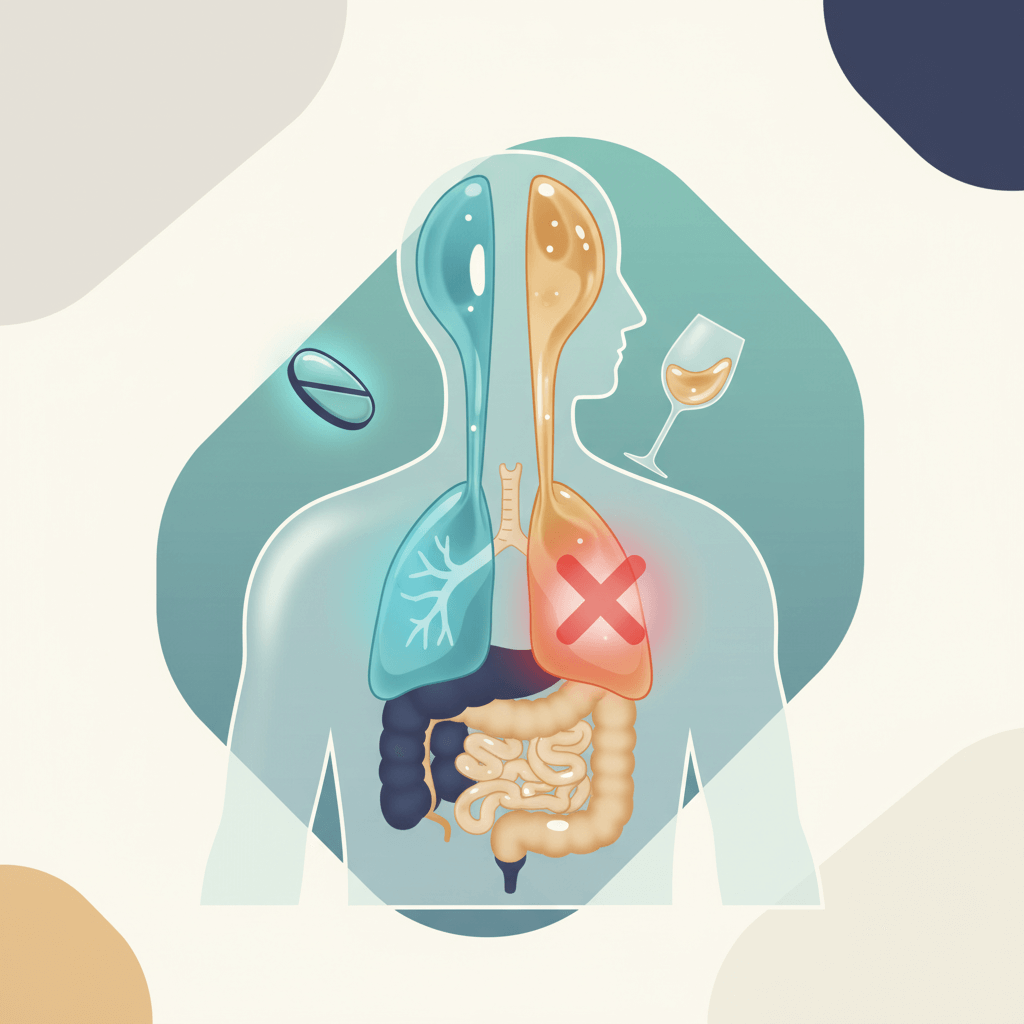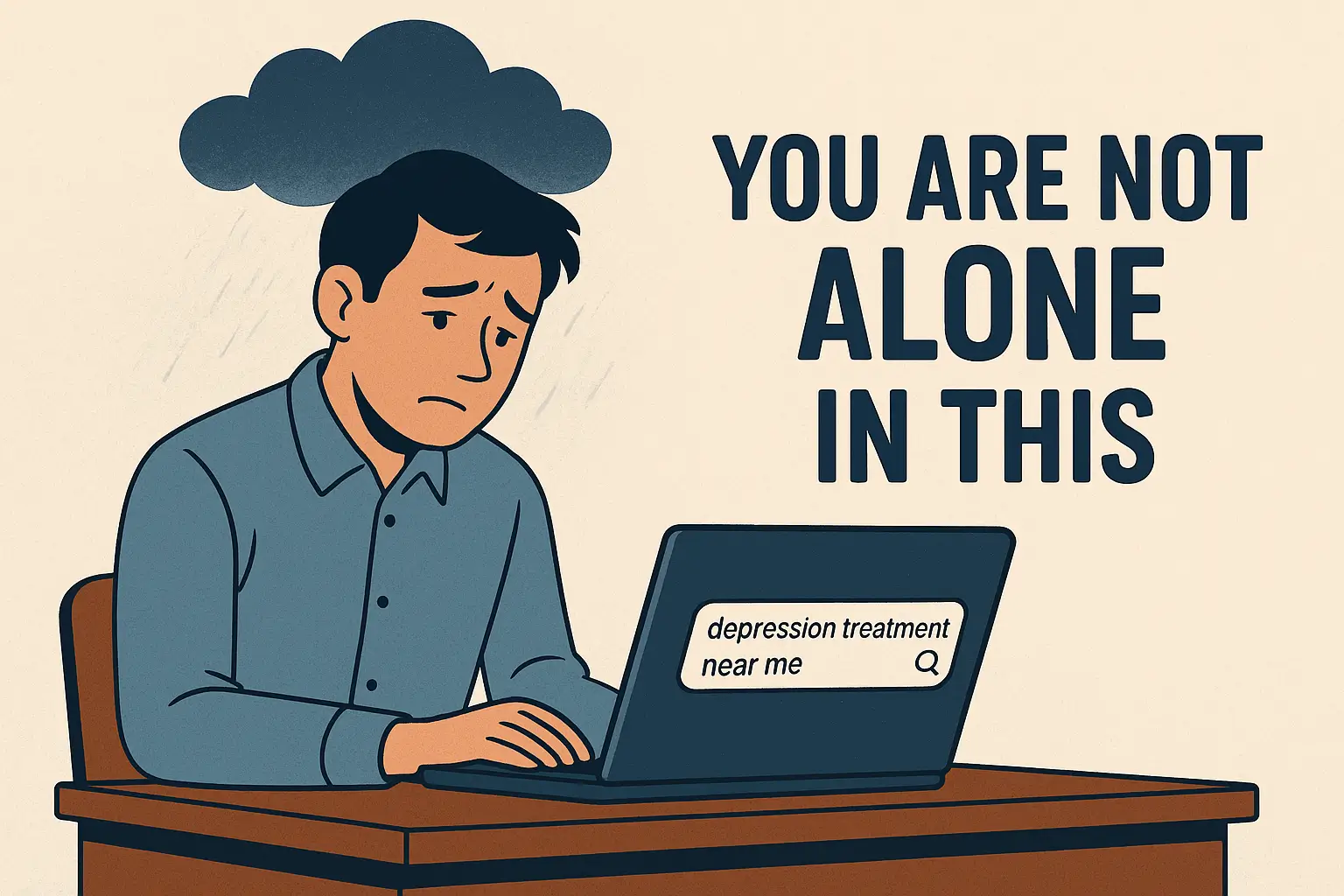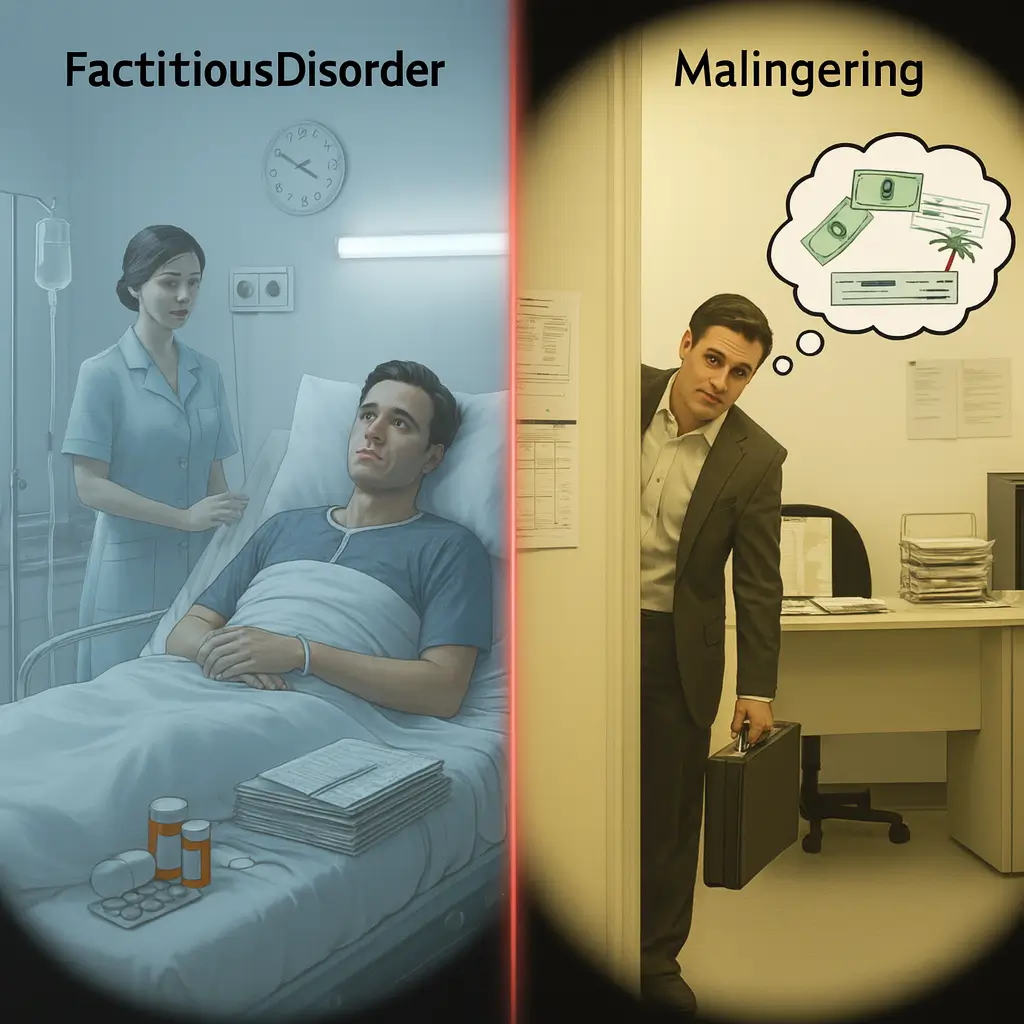Understanding Mood Disorders
Mood disorders encompass a range of mental health conditions that affect a person's emotional state and overall well-being. These disorders can significantly impact an individual's daily life, relationships, and overall quality of life. In this section, we will explore the common types of mood disorders, their symptoms and impact, as well as the risk factors and diagnosis process.

Common Types of Mood Disorders
The most common types of mood disorders include:
- Major Depression: Characterized by persistent feelings of sadness, hopelessness, and loss of interest in activities that were once enjoyable. It can significantly impair a person's ability to function and negatively impact their daily life.
- Dysthymia: A milder but chronic form of depression, where individuals experience a depressed mood most days for at least two years. Although the symptoms may be less severe than major depression, they can still have a significant impact on a person's life.
- Bipolar Disorder: This disorder involves extreme mood swings, ranging from depressive episodes to periods of elevated mood known as mania or hypomania. Bipolar disorder can disrupt a person's daily functioning and affect their relationships.
- Mood Disorder Related to Another Health Condition: Some medical conditions, such as thyroid disorders or neurological conditions, can cause mood disturbances. These conditions require medical attention to address both the underlying health issue and the associated mood disorder.
- Substance-Induced Mood Disorder: Prolonged use or withdrawal from certain substances, such as drugs or alcohol, can lead to mood disturbances. These mood disorders can resolve with abstinence or appropriate treatment.
Symptoms and Impact of Mood Disorders
Individuals with mood disorders commonly experience ongoing feelings of sadness, hopelessness, helplessness, and irritability. Other symptoms may include changes in appetite, sleep disturbances, fatigue, difficulty concentrating, and thoughts of self-harm or suicide.
Without proper treatment, symptoms of mood disorders can persist for weeks, months, or even years, significantly impacting a person's quality of life. Relationships, work or school performance, and overall well-being may be affected.
Risk Factors and Diagnosis of Mood Disorders
Family history plays a significant role in the risk of developing mood disorders. Individuals with a family member who has a mood disorder, such as depression or bipolar disorder, may be at a higher risk themselves. For example, relatives of people with depression are more susceptible to bipolar disorder, and relatives of those with bipolar disorder have an increased risk of depression.
Diagnosing mood disorders involves a comprehensive medical history and psychiatric evaluation conducted by psychiatrists or mental health professionals. Early diagnosis is crucial as it allows for timely intervention and treatment, reducing symptom severity and improving the overall quality of life for individuals with mood disorders.
Treatment for mood disorders often involves a combination of approaches. Antidepressant and mood-stabilizing medications, along with psychotherapy, have shown significant success in managing symptoms of depression and bipolar disorder. Other treatment options may include family therapy, electroconvulsive therapy, and transcranial stimulation. Family support and involvement are crucial for the success of treatment [1].
By understanding the common types of mood disorders, recognizing their symptoms and impact, and seeking appropriate diagnosis and treatment, individuals with mood disorders can effectively manage their condition and improve their overall well-being.
Exploring Anxiety Disorders
Anxiety disorders are a group of mental health conditions characterized by excessive and persistent feelings of fear, worry, or anxiety. These disorders can significantly impact a person's daily life and overall well-being. In this section, we will explore different types of anxiety disorders, their characteristics and symptoms, as well as the diagnosis and treatment options available.
Different Types of Anxiety Disorders
Anxiety disorders encompass a range of specific conditions, each with its own unique features. Some common types of anxiety disorders include:
- Generalized Anxiety Disorder (GAD): GAD involves a persistent feeling of anxiety or dread that can interfere with daily life. People living with GAD experience frequent anxiety for months or even years.
- Panic Disorder: Panic disorder is characterized by frequent and unexpected panic attacks. During a panic attack, a person may experience intense fear, discomfort, or a sense of losing control, even when there is no clear danger or trigger.
- Social Anxiety Disorder: Social anxiety disorder is an intense fear of being watched and judged by others. People with social anxiety disorder may experience fear so intense that it interferes with daily activities such as work, school, or social interactions.
- Phobia-Related Disorders: Phobia-related disorders involve an intense fear of or aversion to specific objects or situations. Phobias can be out of proportion to the actual danger caused by the situation or object. Examples of phobias include specific phobias, social anxiety disorder (social phobia), agoraphobia, separation anxiety disorder, and selective mutism.
Characteristics and Symptoms of Anxiety Disorders
Anxiety disorders share common characteristics, including excessive worry, restlessness, and physical symptoms such as increased heart rate, sweating, and trembling. However, each type of anxiety disorder may have specific symptoms and triggers associated with it. Understanding these symptoms is crucial for accurate diagnosis and appropriate treatment.
For example, individuals with GAD may experience persistent worry, difficulty concentrating, and muscle tension. Panic disorder is characterized by recurring panic attacks, which involve intense fear and physical sensations such as chest pain, shortness of breath, and dizziness.
Social anxiety disorder manifests as extreme self-consciousness and fear of judgment in social situations, leading individuals to avoid such interactions. Phobia-related disorders involve specific fears or aversions to objects or situations, leading to avoidance behaviors.
Diagnosis and Treatment of Anxiety Disorders
Diagnosing anxiety disorders involves a comprehensive evaluation by a mental health professional. The diagnostic process includes assessing symptoms, duration, and impact on daily functioning. It is important to rule out other medical or psychiatric conditions that may present with similar symptoms.
Treatment for anxiety disorders often involves a combination of therapy and medication. Cognitive-behavioral therapy (CBT) is a commonly used form of therapy that helps individuals identify and challenge negative thought patterns and develop coping strategies. Medications such as antidepressants or anti-anxiety medications may be prescribed to manage symptoms and improve overall well-being.
In addition to therapy and medication, lifestyle changes such as regular exercise, stress management techniques, and adequate sleep can also play a significant role in managing anxiety disorders.
It's essential to seek professional help if you or someone you know is experiencing symptoms of anxiety disorders. With proper diagnosis and treatment, individuals can effectively manage their anxiety symptoms and improve their quality of life.
Overview of Personality Disorders
Personality disorders encompass a group of mental health conditions characterized by long-lasting, disruptive patterns of thinking, behavior, mood, and relating to others. There are 10 different types of personality disorders, each with its own unique characteristics and symptoms. These disorders are organized into three main clusters: Cluster A, Cluster B, and Cluster C. It is important to note that individuals with personality disorders often do not realize that their thoughts and behaviors are problematic.
Types and Clusters of Personality Disorders
Personality disorders are classified into 10 distinct types, categorized into three main clusters. Here is an overview of each cluster and the personality disorders within them:
Cluster A: Odd, Eccentric Behaviors
- Paranoid Personality Disorder
- Schizoid Personality Disorder
- Schizotypal Personality Disorder
Cluster B: Dramatic, Emotional, and Erratic Behaviors
- Antisocial Personality Disorder
- Borderline Personality Disorder
- Histrionic Personality Disorder
- Narcissistic Personality Disorder
Cluster C: Anxious, Fearful Behaviors
- Avoidant Personality Disorder
- Dependent Personality Disorder
- Obsessive-Compulsive Personality Disorder
Symptoms and Recognition of Personality Disorders
Recognizing personality disorders can be challenging as individuals with these disorders may not perceive their thoughts and behaviors as problematic. However, certain symptoms and patterns can indicate the presence of a personality disorder. Some common signs include:
- Difficulty forming and maintaining stable relationships
- Persistent patterns of distrust, suspicion, or social withdrawal
- Impulsive and risky behaviors
- Intense emotions and unstable relationships (particularly in borderline personality disorder)
- Exaggerated need for attention or admiration (seen in narcissistic and histrionic personality disorders)
- Chronic feelings of inadequacy, fear of rejection, and avoidance of social situations (characteristic of avoidant personality disorder)
- Obsessive need for control, perfectionism, and rigidity (obsessive-compulsive personality disorder)
Prevalence and Diagnosis of Personality Disorders
Personality disorders are more prevalent than one might expect. Approximately 9% of adults in the United States have some form of personality disorder, and globally, around 6% of the population is affected. Borderline personality disorder (BPD) and antisocial personality disorder are the most frequently diagnosed personality disorders.
It is worth noting that personality disorders often emerge during the teenage years when personality further develops and matures. Most individuals diagnosed with personality disorders are above the age of 18, with the exception of antisocial personality disorder, where approximately 80% of individuals show symptoms by the age of 11.
Due to the overshadowing prevalence of symptoms related to anxiety or depression, which are more common in the general population, personality disorders can be underdiagnosed. Healthcare providers sometimes focus on these more prevalent conditions, leading to a potential oversight of underlying personality disorders [3].
A Closer Look at Schizophrenia
Schizophrenia is a complex mental disorder that requires comprehensive treatment approaches to help individuals manage their symptoms and improve their overall quality of life. In this section, we will explore different treatment approaches, the importance of early intervention and support, as well as the medications and therapies commonly used for schizophrenia.
Treatment Approaches for Schizophrenia
The treatment of schizophrenia often involves an individually tailored combination of talking therapy and medication. Community mental health teams (CMHTs) play a crucial role in providing day-to-day support and treatment for individuals with schizophrenia, ensuring as much independence as possible [4].
Care Programme Approach (CPA) is usually implemented for people with complex mental health conditions like schizophrenia. It consists of a four-stage process that ensures the right treatment for their specific needs. This approach involves developing a care plan, promoting healthy lifestyle choices such as healthy eating and physical activity, supporting individuals to quit smoking, and coordination by a care coordinator to ensure all healthcare team members have access to the care plan.
Crisis Resolution Teams (CRTs) are specialized teams that provide intensive care for individuals experiencing acute schizophrenic episodes. The aim is to provide treatment in the least restrictive environment possible, such as in the individual's own home or a day care center, while arranging aftercare to prevent further crises.
Early Intervention and Support for Schizophrenia
During the first episode of schizophrenia, individuals are often referred to early intervention teams composed of specialists, including psychiatrists, psychologists, mental health nurses, social workers, and support workers. These teams provide prompt assessment, treatment, and support to individuals experiencing their first psychotic episode. Early intervention is crucial for improving outcomes and reducing the impact of the disorder on individuals' lives.
Medications and Therapies for Schizophrenia
Antipsychotic medications are typically recommended as the initial treatment for acute schizophrenic episodes. These medications work by blocking the effects of dopamine or other chemicals in the brain, helping to reduce symptoms such as hallucinations and delusions. It is often necessary to continue taking antipsychotics for one to two years after the first psychotic episode to prevent further acute episodes.
In addition to medication, various forms of therapy can be beneficial for individuals with schizophrenia. These may include:
- Cognitive Behavioral Therapy (CBT): CBT aims to help individuals identify and change negative patterns of thinking and behavior, thereby managing symptoms and improving coping strategies.
- Family Therapy: Family therapy involves the participation of family members to improve communication, enhance understanding, and provide support for both the individual with schizophrenia and their loved ones.
- Social Skills Training: This type of therapy focuses on improving social interactions and communication skills, enhancing relationships and overall functioning in various social settings.
Therapeutic approaches are often tailored to the individual's specific needs and may be combined to create a comprehensive treatment plan.
By implementing a combination of medication, therapy, early intervention, and ongoing support, individuals with schizophrenia can effectively manage their symptoms and work towards achieving their personal goals. It is important for individuals and their loved ones to work closely with healthcare professionals to develop a treatment plan that suits their unique needs and promotes their overall well-being.
References
[1]: https://www.hopkinsmedicine.org/health/conditions-and-diseases/mood-disorders
[2]: https://www.nimh.nih.gov/health/topics/anxiety-disorders
[3]: https://my.clevelandclinic.org/health/diseases/9636-personality-disorders-overview
[4]: https://www.nhs.uk/mental-health/conditions/schizophrenia/treatment/













